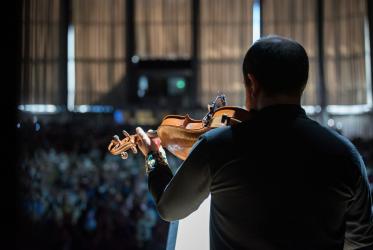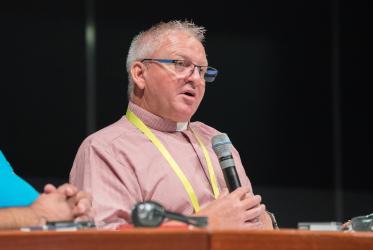Church of England
The Christian faith came to England early in the Christian era. Celtic forms of Christianity preceded the Roman mission of Augustine who became the first archbishop of Canterbury in 597. Since early medieval times the English church has consisted of the provinces of Canterbury and York, each with its primate. In the 1530s the English church rejected the jurisdiction of the Bishop of Rome and came under Lutheran and then Calvinist theological influences. A vernacular Bible and reformed liturgy, communion in both kinds, a married clergy and increased influence of the sovereign and parliament over the church were the results of the Reformation. The threefold ministry, ordination by bishops, the diocesan-parochial structure, cathedrals, church courts and much medieval canon law were retained. The attempt to establish a comprehensive national church continued for over a century, but was ultimately unsuccessful. The mid-17th century saw the abolition and subsequent restoration, in 1662, of "Anglicanism".
The English Bible, the Book of Common Prayer, the Christian Year, the parochial context and loyalty to the sovereign gave the Church of England a distinct identity. The Thirty-nine Articles of Religion express a credal and reformed doctrinal position, but are restrained and inclusive. The 18th century was marked by the evangelical revival and the creation of voluntary missionary societies. The 19th century saw the rise of the Oxford Movement, with its emphasis on the recovery of the catholic tradition, and the growth of the Free churches. In the 20th century the Church of England was shaped by biblical theology and by the liturgical and ecumenical movements. It gradually acquired extensive powers of self-government, while remaining the established church and continuing to value partnership with the state. It is governed by a general synod of bishops, clergy and laity. The synod controls its doctrine, liturgy and discipline and nominates diocesan bishops to the crown. The first modern liturgy was the Alternative Service Book 1980, but this has been superseded by Common Worship.
The Church of England has sometimes been identified with the wealthier and more influential elements of society. However, it has retained a presence in inner cities and remote rural areas, from which some other churches have withdrawn. It is deeply involved in education at all levels (there are many church schools) and in various forms of chaplaincy. England escaped the atheistic anti-clericalism which affected some other European countries. All the political parties have Anglicans in their membership. The church makes known its views on ethical and social issues through debates in its general synod, statements of the archbishops, the presence of bishops in the House of Lords, and direct approaches to government.
Among the current primary concerns of the church are (1) re-energizing mission, especially in rural areas and in inner cities (where other religions are a significant presence); (2) promoting lay education and lay participation in mission and ministry; (3) increasing awareness of Christian stewardship; (4) assimilating women priests and considering the possibility of women bishops.
The Church of England is committed to the goal of the full visible unity of Christ's church. In recent years, it has entered into communion with Nordic and Baltic Lutheran churches through the Porvoo Agreement, and into relationships of mutual acknowledgement and commitment with the Evangelical Church in Germany (Meissen Agreement), the Moravian Church (Fetter Lane Agreement), the French Lutheran and Reformed Churches (Reuilly Agreement) and the Methodist Church in Great Britain (the Covenant). Progress on theological agreement has been made with the Roman Catholic Church through the Anglican-Roman Catholic International Commission, English ARC being the national bilateral instrument for Anglican-Roman Catholic relations.





